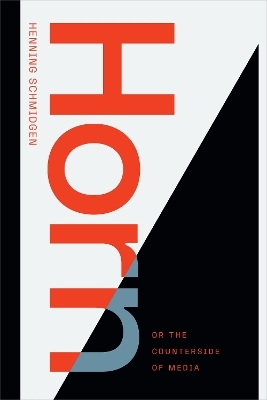
Horn, or The Counterside of Media
Seiten
2022
Duke University Press (Verlag)
978-1-4780-1510-9 (ISBN)
Duke University Press (Verlag)
978-1-4780-1510-9 (ISBN)
Henning Schmidgen reflects on the dynamic phenomena of touch in media, analyzing works by artists, scientists, and philosophers ranging from Salvador Dalí to Walter Benjamin, who each explore the interplay between tactility and technological and biological surfaces.
We regularly touch and handle media devices. At the same time, media devices such as body scanners, car seat pressure sensors, and smart phones scan and touch us. In Horn, Henning Schmidgen reflects on the bidirectional nature of touch and the ways in which surfaces constitute sites of mediation between interior and exterior. Schmidgen uses the concept of "horn"—whether manifested as a rhinoceros horn or a musical instrument—to stand for both natural substances and artificial objects as spaces of tactility. He enters into creative dialogue with artists, scientists, and philosophers, ranging from Salvador Dalí, William Kentridge, and Rebecca Horn to Sigmund Freud, Walter Benjamin, and Marshall McLuhan, who plumb the complex interplay between tactility and technological and biological surfaces. Whether analyzing how Dalí conceived of images as tactile entities during his “rhinoceros phase” or examining the problem of tactility in Thomas Pynchon’s The Crying of Lot 49, Schmidgen reconfigures understandings of the dynamic phenomena of touch in media.
We regularly touch and handle media devices. At the same time, media devices such as body scanners, car seat pressure sensors, and smart phones scan and touch us. In Horn, Henning Schmidgen reflects on the bidirectional nature of touch and the ways in which surfaces constitute sites of mediation between interior and exterior. Schmidgen uses the concept of "horn"—whether manifested as a rhinoceros horn or a musical instrument—to stand for both natural substances and artificial objects as spaces of tactility. He enters into creative dialogue with artists, scientists, and philosophers, ranging from Salvador Dalí, William Kentridge, and Rebecca Horn to Sigmund Freud, Walter Benjamin, and Marshall McLuhan, who plumb the complex interplay between tactility and technological and biological surfaces. Whether analyzing how Dalí conceived of images as tactile entities during his “rhinoceros phase” or examining the problem of tactility in Thomas Pynchon’s The Crying of Lot 49, Schmidgen reconfigures understandings of the dynamic phenomena of touch in media.
Henning Schmidgen is Professor of Media Studies at Bauhaus-Universität Weimar and author of Bruno Latour in Pieces: An Intellectual Biography and The Helmholtz Curves: Tracing Lost Time.
Preface vii
Introduction 1
1. The Captured Unicorn 13
2. Impressions of Modernity 49
3. Rhinoceros Cybernetics 88
4. A Surface Medium Par Excellence 148
5. Horn and Time 192
Conclusion 240
Notes 251
Bibliography 273
Index 293
| Erscheinungsdatum | 17.01.2022 |
|---|---|
| Reihe/Serie | Sign, Storage, Transmission |
| Übersetzer | Nils F. Schott |
| Zusatzinfo | 101 illustrations |
| Verlagsort | North Carolina |
| Sprache | englisch |
| Maße | 152 x 229 mm |
| Gewicht | 658 g |
| Themenwelt | Kunst / Musik / Theater ► Antiquitäten |
| Sozialwissenschaften ► Kommunikation / Medien ► Medienwissenschaft | |
| ISBN-10 | 1-4780-1510-1 / 1478015101 |
| ISBN-13 | 978-1-4780-1510-9 / 9781478015109 |
| Zustand | Neuware |
| Informationen gemäß Produktsicherheitsverordnung (GPSR) | |
| Haben Sie eine Frage zum Produkt? |
Mehr entdecken
aus dem Bereich
aus dem Bereich
wie KI und virtuelle Welten von uns Besitz ergreifen – und die …
Buch | Hardcover (2023)
Heyne (Verlag)
22,00 €
Buch | Softcover (2023)
Passagen (Verlag)
18,00 €


